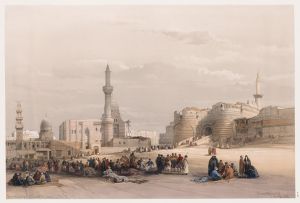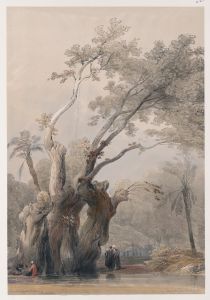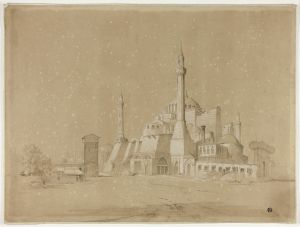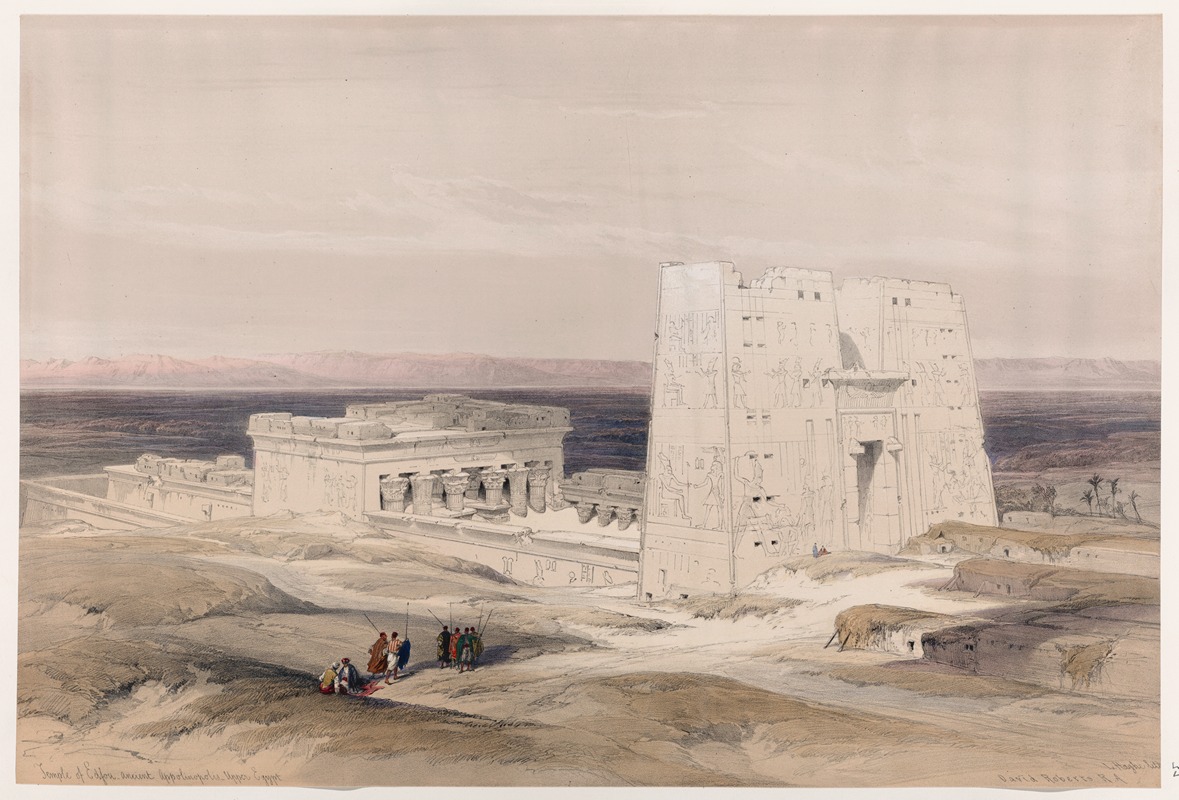
Temple of Edfou [Idfû], ancient Appolinopolis, Upper Egypt.
A hand-painted replica of David Roberts’s masterpiece Temple of Edfou [Idfû], ancient Appolinopolis, Upper Egypt., meticulously crafted by professional artists to capture the true essence of the original. Each piece is created with museum-quality canvas and rare mineral pigments, carefully painted by experienced artists with delicate brushstrokes and rich, layered colors to perfectly recreate the texture of the original artwork. Unlike machine-printed reproductions, this hand-painted version brings the painting to life, infused with the artist’s emotions and skill in every stroke. Whether for personal collection or home decoration, it instantly elevates the artistic atmosphere of any space.
"Temple of Edfou [Idfû], ancient Appolinopolis, Upper Egypt" is a painting by the renowned Scottish artist David Roberts. Roberts, born in 1796, was a distinguished painter known for his detailed and accurate depictions of architectural and historical sites. His works are particularly celebrated for their contribution to the Western understanding of Middle Eastern and North African cultures during the 19th century.
The painting depicts the Temple of Edfu, one of the best-preserved ancient monuments in Egypt. The Temple of Edfu, dedicated to the falcon god Horus, is located on the west bank of the Nile in the city of Edfu, which was known in ancient times as Apollinopolis Magna. This temple is a significant example of Ptolemaic architecture, constructed between 237 and 57 BCE during the reign of the Ptolemaic dynasty.
David Roberts visited Egypt as part of his extensive travels across the Middle East between 1838 and 1839. His journey was part of a larger expedition to document the ancient sites of the region, which resulted in a series of lithographs published in "The Holy Land, Syria, Idumea, Arabia, Egypt, and Nubia" between 1842 and 1849. These works were highly influential in bringing the grandeur of these ancient sites to a European audience.
The painting "Temple of Edfou [Idfû], ancient Appolinopolis, Upper Egypt" captures the grandeur and scale of the temple complex. Roberts' meticulous attention to detail is evident in the accurate rendering of the temple's columns, hieroglyphs, and reliefs. The composition of the painting highlights the imposing structure of the temple, set against the backdrop of the Egyptian landscape. The use of light and shadow in the painting enhances the three-dimensional quality of the architecture, bringing the ancient stones to life.
Roberts' work is characterized by its precise and realistic portrayal of architectural details, combined with a romanticized view of the ancient world. His paintings and lithographs were based on on-site sketches and notes, which he meticulously translated into finished works upon his return to Britain. The accuracy of his depictions has been praised by both art historians and archaeologists, making his works valuable historical documents as well as artistic achievements.
The Temple of Edfu itself is one of the most significant and well-preserved temples in Egypt. It was built over a period of 180 years and is dedicated to Horus, one of the most important deities in the Egyptian pantheon. The temple complex includes a large courtyard, a hypostyle hall, and a sanctuary, all adorned with intricate carvings and inscriptions that provide insight into the religious practices and beliefs of the time.
David Roberts' painting of the Temple of Edfu serves as a testament to his skill as an artist and his dedication to documenting the ancient world. His work continues to be appreciated for its historical accuracy and artistic merit, offering viewers a glimpse into the grandeur of ancient Egyptian civilization.





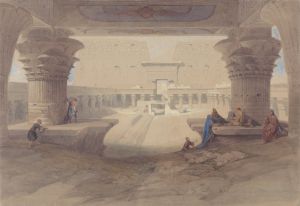
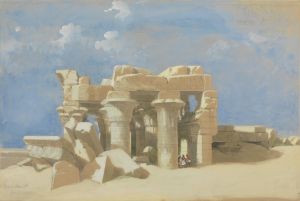
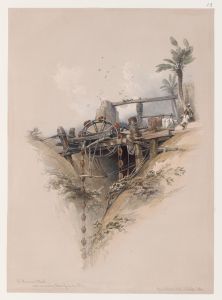
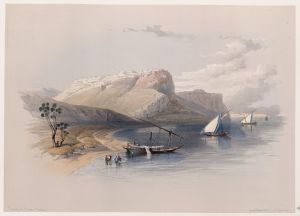
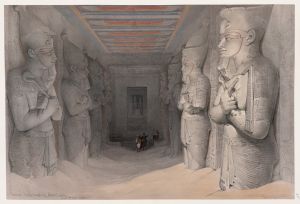
![Karnac [Karnak]. Nov. 29th, 1838.](/imgs/217502/s/david-roberts-karnac-karnak-nov-29th-1838-8df2346d.jpg)
![Lateral view of the temple called the Typhonæum, at Dendera [Dandara].](/imgs/217507/s/david-roberts-lateral-view-of-the-temple-called-the-typhonaeum-at-dendera-dandara-b378b9d7.jpg)
![Portico of the Temple of Edfou [Idfû], Upper Egypt. Nov. 23rd, 1838.](/imgs/217527/s/david-roberts-portico-of-the-temple-of-edfou-idfu-upper-egypt-nov-23rd-1838-79b6cf5b.jpg)
![Temple of Isis on the roof of the great temple of Dendera [Dandara].](/imgs/217547/s/david-roberts-temple-of-isis-on-the-roof-of-the-great-temple-of-dendera-dandara-fd95528e.jpg)
![Temple of Kalabshee [Kalabsha, Kalâbishah], Nubia. Nov. 1838.](/imgs/217548/s/david-roberts-temple-of-kalabshee-kalabsha-kalabishah-nubia-nov-1838-be0ac440.jpg)
